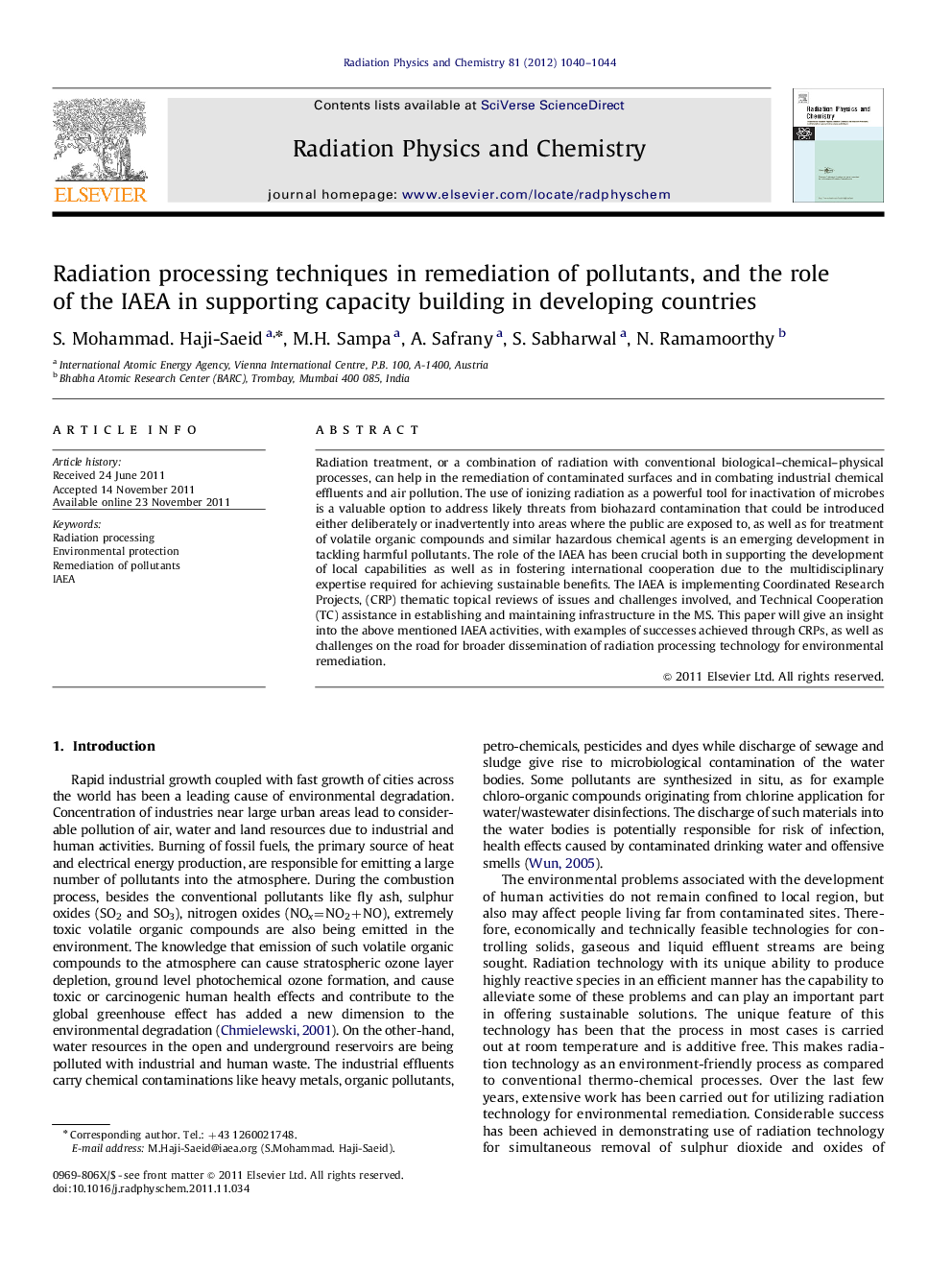| Article ID | Journal | Published Year | Pages | File Type |
|---|---|---|---|---|
| 1883955 | Radiation Physics and Chemistry | 2012 | 5 Pages |
Radiation treatment, or a combination of radiation with conventional biological–chemical–physical processes, can help in the remediation of contaminated surfaces and in combating industrial chemical effluents and air pollution. The use of ionizing radiation as a powerful tool for inactivation of microbes is a valuable option to address likely threats from biohazard contamination that could be introduced either deliberately or inadvertently into areas where the public are exposed to, as well as for treatment of volatile organic compounds and similar hazardous chemical agents is an emerging development in tackling harmful pollutants. The role of the IAEA has been crucial both in supporting the development of local capabilities as well as in fostering international cooperation due to the multidisciplinary expertise required for achieving sustainable benefits. The IAEA is implementing Coordinated Research Projects, (CRP) thematic topical reviews of issues and challenges involved, and Technical Cooperation (TC) assistance in establishing and maintaining infrastructure in the MS. This paper will give an insight into the above mentioned IAEA activities, with examples of successes achieved through CRPs, as well as challenges on the road for broader dissemination of radiation processing technology for environmental remediation.
► Treatment of textile dyes effluents using electron beam demonstrated commercially. ► Simultaneous removal of VOC, SO2 and NOx from flue gas by electron beam demonstrated. ► Mobile electron beam facility developed to demonstrate technologies to industry. ► Radiation grafted membranes detect sub-ppb level of lead ions in wastewaters. ► Membranes for fuel cell synthesized using radiation technology.
